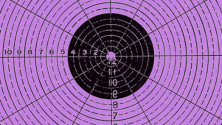When the Supreme Court decided the Bilski case, it didn't speak directly to the issue of software patents. But the Bilski majority emphasized that abstract ideas are not patentable, and recognized that allowing patents for abstract ideas could hinder innovation. Thus there's still room for discussion of the legal standard for when, if ever, there should be patents on software.
The Patent and Trademark Office is on the front line of the issue, since it has the duty of deciding whether to grant patent applications. Whatever interpretation of Bilski it adopts, its decision will affect the patent landscape. It was good, then, to see that this summer the PTO invited public comments on its proposed interpretation of the Bilski case.
This is an issue that Red Hat has been involved in, having previously submitted an amicus brief in Bilski. Earlier this week, Red Hat responded to the PTO's request and submitted an understanding of Bilski that would mitigate some of the harm caused by poor quality software patents. Here's the main part of the message that Red Hat sent to the PTO:
Today there are hundreds of thousands of patents relating to software, and tens of thousands continue to be granted each year. In many cases, these patents have vague and uncertain boundaries. Thus it is virtually impossible to determine whether a new software product could be deemed to infringe an existing patent. This means that introducing any innovative software product entails a risk of a lawsuit based on a vague patent. Such lawsuits often cost millions of dollars to defend, along with the risk of actual damages, treble damages, and injunctions. Far from encouraging innovation, vague software patents discourage it. The problem of vagueness is so endemic in software patents that it warrants action at the threshold level of subject matter eligibility.
In view of this serious problem, Red Hat submits that the Interim Guidance should be revised to recognize that software patents will ordinarily fail to satisfy the requirements of 35 U.S.C. Section 101 as interpreted in Bilski and prior Supreme Court cases. Software is essentially nothing more than a set of mathematical algorithms expressed in a particular programming or machine language. As the Bilski Court recognized, mathematical algorithms, by themselves, are abstract ideas that are not patentable.
As the Supreme Court found in Diehr and reiterated in Bilski, an application of a mathematical formula (as opposed to the formula by itself) may be entitled to patent protection. This does not mean, however, that merely storing or running software on a general purpose computer justifies granting a patent on an otherwise unpatentable algorithm. This is clear from the Supreme Court's Benson decision, which rejected as an unpatentable abstract idea a mathematical algorithm capable of being used in programming a general purpose computer. Thus the statement in the Interim Guidance that “recitation of some structure, such as a machine . . . will in most cases limit the claim to such an application” is overly broad and subject to misinterpretation.
The Bilski Court strongly reaffirmed that abstract ideas, including mathematical algorithms, are not patentable. In applying Bilski, the Patent and Trademark Office should recognize the applicability of this principle to software patents. This course is consistent both with the Supreme Court's teachings and the core patent objective of encouraging innovation.







11 Comments